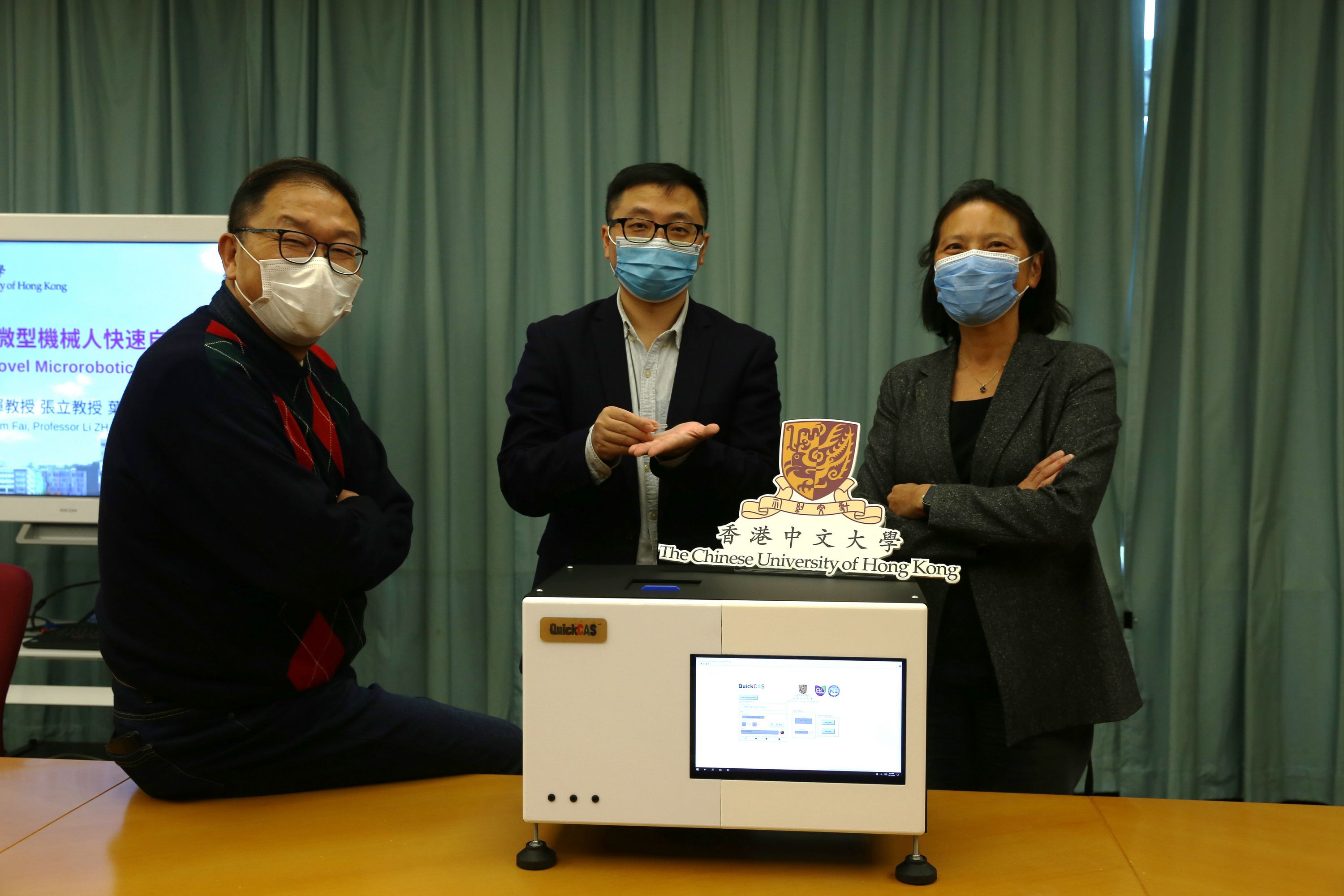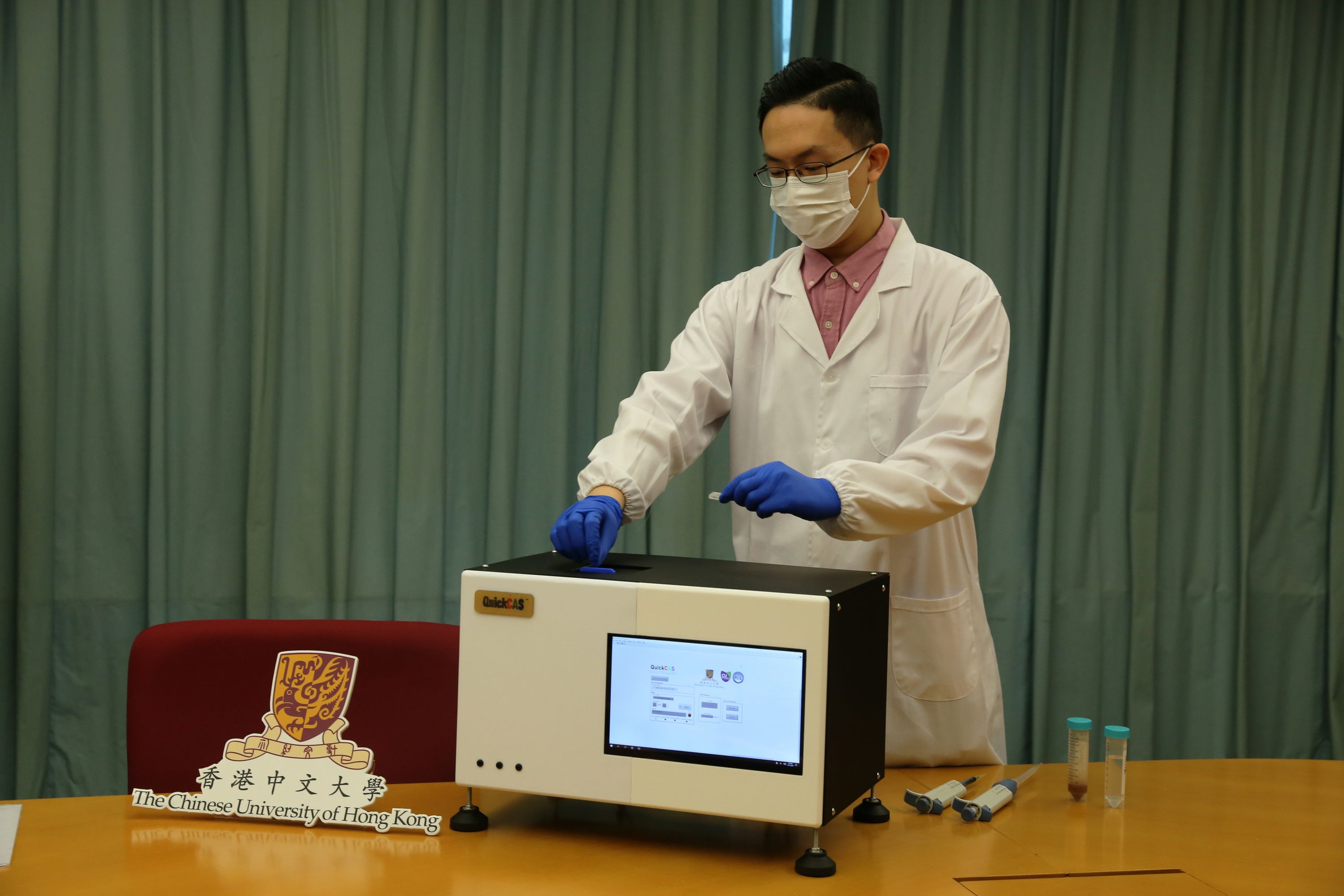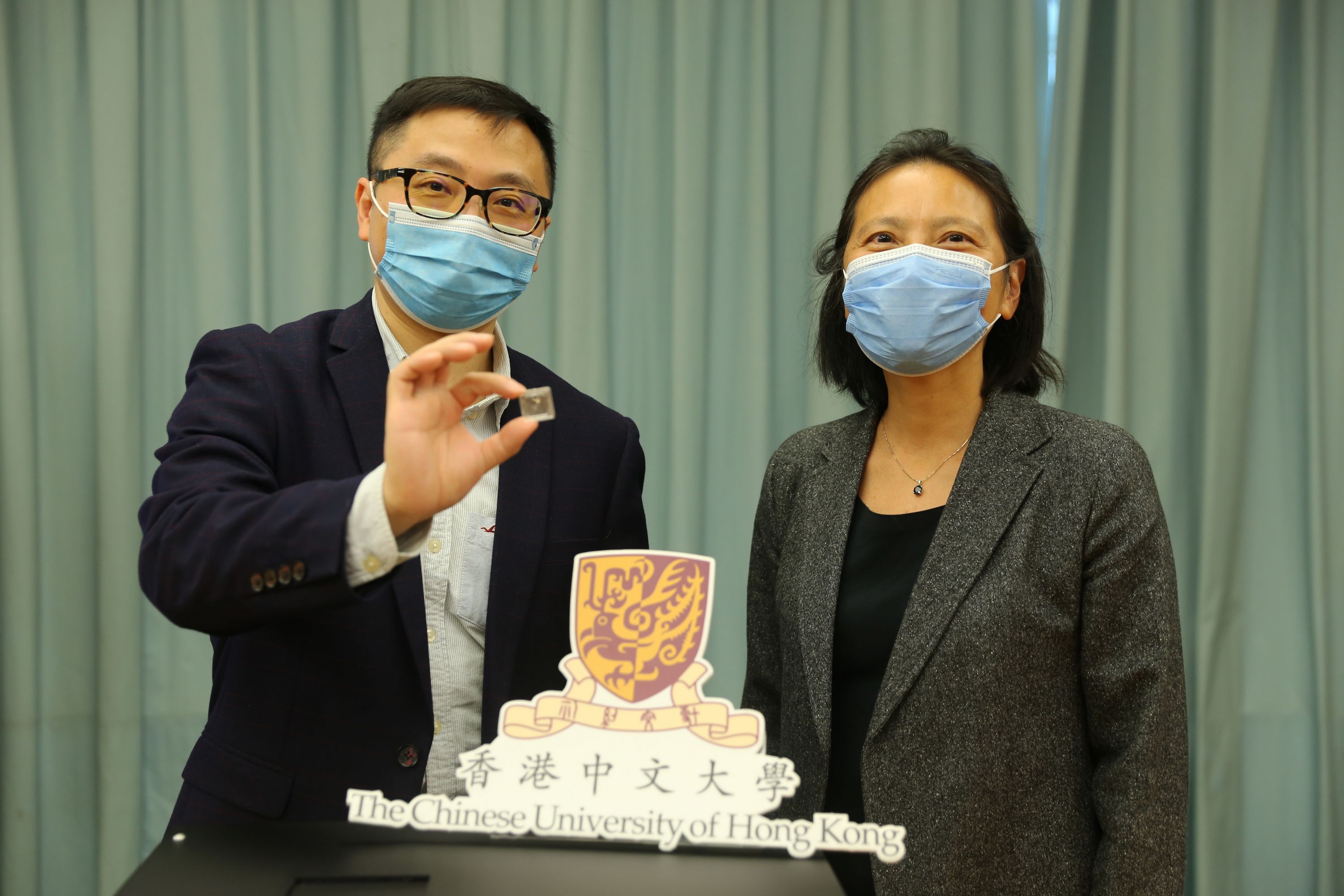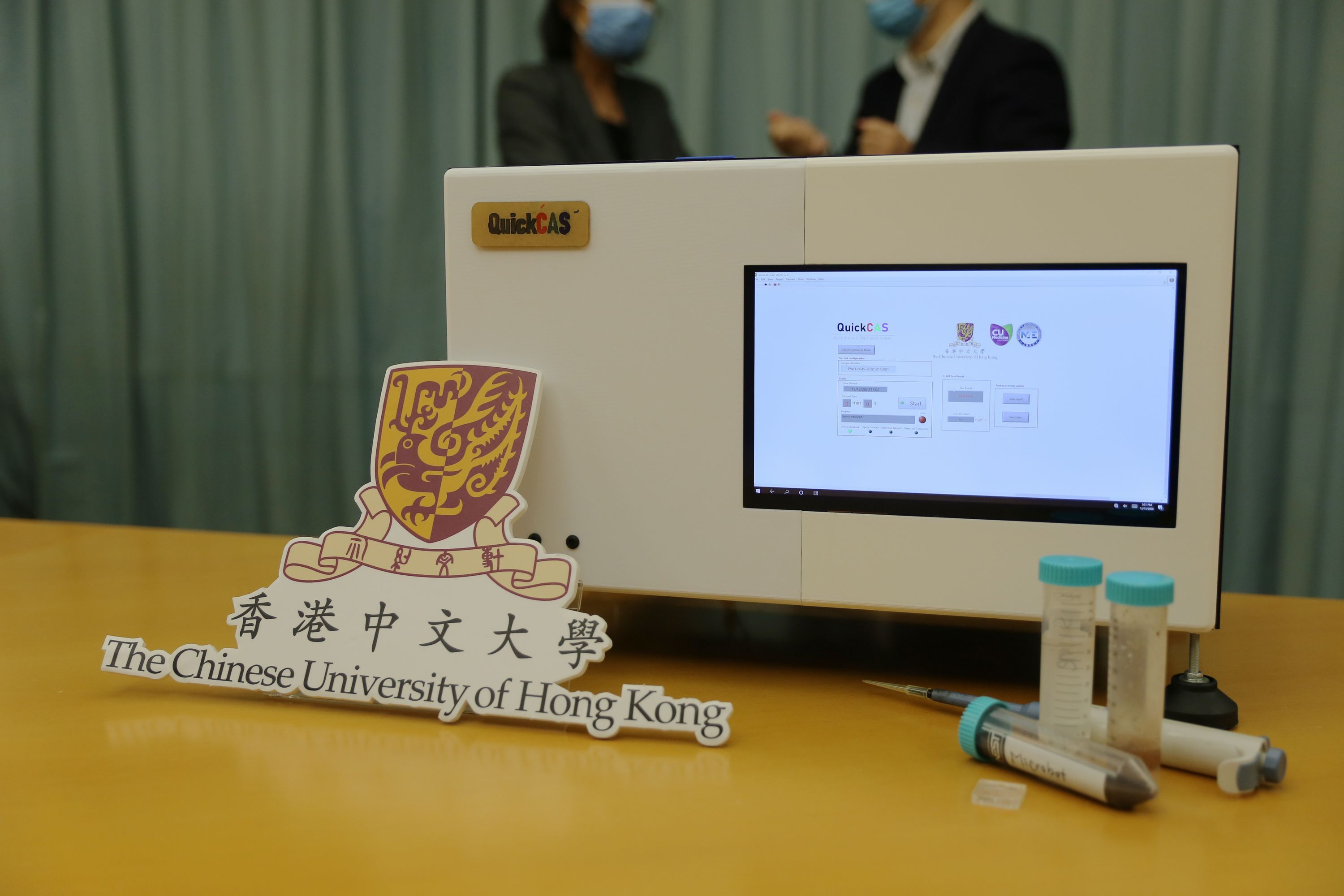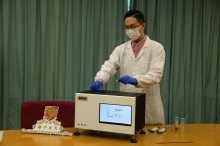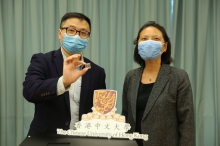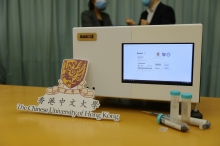News Centre
CUHK Develops Novel Microrobotic Diagnostic System to Accurately Diagnose Infectious Pathogens with Full Automation and Low Cost
The Chinese University of Hong Kong (CUHK) has recently developed a fully automated, low cost and rapid microrobotic diagnostic system with comparable sensitivity and specificity to clinical detection methods. The research team is now studying the application of this microrobotic system for multiple pathogens including the COVID-19. This system has been developed by a collaborative research team led by Professor Li ZHANG, Associate Professor, Department of Mechanical and Automation Engineering, Professor Margaret IP, Professor, Department of Microbiology, Professor Joseph SUNG, Mok Hing Yiu Professor of Medicine and Director of the Institute of Digestive Disease, and Professor Sunny WONG, Associate Professor, Department of Medicine and Therapeutics.
Pathogen detention is indispensable for accurate diagnosis of diseases. As the pandemic of COVID-19 rages worldwide, the soaring demand for rapid testing has led to heavy workload for laboratory personnel on an unprecedented scale. Worse still, the longer the hospitalisation of patients, the higher the risk of patients being infected by pathogens that can be fatal. Hence, prompt clinical diagnosis is critical for patients showing signs of suspected infection. Under the dual pressure of pandemic and existing medical needs, shortages of medical manpower and resources including the laboratories may delay diagnosis, which can result in the suspension of other necessary medical procedures. Professor Margaret IP said, “With globalisation, the spread of infectious diseases is not restricted to geographical areas. To enhance the diagnosis of infections and control, testing using automatic rapid detection systems is the general trend.”
Professor Li ZHANG and his team have developed an innovative microrobotic detection system, integrating the novel fluorescent microrobots with an external magnetic actuation system to accurately detect specific pathogens in a short time. The microrobotic sensing probes are G. lucidum spores coated by a layer of iron oxide nanoparticles and functionalised with carbon dots. By analysing the changes in the fluorescence signal of the microrobots under green light excitation, the system can determine the presence of pathogen in patients’ samples. In addition, the system uses an external magnetic field to remotely actuate the microrobots, speeding up the fluorescence quenching and thus shortening the detection time.
The first generation of microrobotic detection system, “QuickCAS”, aims at detecting Clostridium difficile (C. diff), a common pathogen of nosocomial infection. The research team is now entering clinical trials, with the goal of testing in hospitals next year. In view of the pandemic disease, the team has worked closely with Professor Margaret IP in utilising the microrobotic detection system for the COVID-19 diagnosis. The development of multiple pathogens detection using the microrobotic detection system is underway, covering common pathogens such as Streptococcus pneumoniae, Salmonella, pathogenic Escherichia coli and Helicobacter pylori, and it is expected to benefit medical institutions worldwide.
Current chemical detection methods rely on the reaction between pathogen and biomolecular reagents. These bioreagents typically need to be refrigerated or frozen to preserve their structure and viability. On the other hand, the microrobots are stable for transportation and storage under room temperature. Professor Li ZHANG said, “As QuickCAS uses physical detection methods, the reagents do not require refrigeration. It successfully breaks through the pain points of current chemical detection methods. In the future, medical centres in remote and poor areas or small scale healthcare service providers will have the opportunity to provide accurate clinical diagnostic services.”
Additionally, the existing methods of C. diff detection take 2 to 4 hours, but QuickCAS only takes 15 to 30 minutes to complete, and the cost has been greatly reduced from approximately HK$300 to about HK$50 per test. The automated system can not only provide hospitals with timely diagnosis and treatment for patients, but also reduce the workload and the risk of infection of medical staff during laboratory tests. Moreover, infection controls can be implemented earlier to prevent infection outbreak. By simplifying the testing procedures, even junior laboratory technicians with only basic training can operate the system, alleviating the pressure from the current shortage of experienced laboratory technicians.
Demonstrating 20 innovative projects at the “InnoCarnival 2020”
CUHK will participate in the InnoCarnival 2020, organised by the Innovation and Technology Commission of the Hong Kong Special Administrative Region Government, from 23 to 31 December on the virtual exhibition platform. Members of the public are welcome to visit CUHK’s virtual booth to learn more about the microrobotic detection system and see another 19 innovative projects. This year, to deepen the understanding of the CUHK projects, an online quiz competition will be launched during the InnoCarnival 2020, with fabulous prizes to be won.
Date: 23 to 31 December 2020
Time: 24 hours
Virtual exhibition website: http://innocarnival.hk
Professor Li ZHANG
Professor Li ZHANG joined the Department of Mechanical and Automation Engineering (MAE) at CUHK in 2012. He is an associate member of the Chow Yuk Ho Technology Centre for Innovative Medicine and CUHK T Stone Robotics Institute; and currently acts as the Director of the Shenzhen Institutes of Advanced Technology (SIAT) of the Chinese Academy of Sciences (CAS) – CUHK Joint Laboratory of Robotics and Intelligent Systems. Professor Zhang is dedicated to the biomedical applications and technology transfer of micro-/nanorobotics. He won the Hong Kong Research Grants Committee (RGC) Early Career Award in 2013, United College Early Career Research Excellence Merit Award 2018, and CUHK Research Excellence Award 2019-20. Professor Zhang is a Distinguished Lecturer appointed by the IEEE Nanotechnology Council.
Professor Margaret IP
Professor Ip is a clinical microbiologist and Professor at the Faculty of Medicine and Prince of Wales Hospital. She studies the epidemiology of pathogenic organisms important locally and abroad, including multidrug resistant bacteria such as MRSA, Streptococcus pneumoniae, Group B Streptococcus, and Clostridium difficile. She aims at improving the diagnoses and treatment modalities of these infections for the wider community. She is a member of technical working groups at the WHO, FAO, and Scientific Committees in these areas.
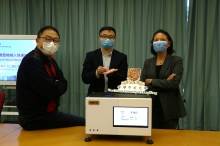
CUHK has recently developed a fully automated, low cost and rapid microrobotic diagnostic system with comparable sensitivity and specificity to clinical detection methods. The research team is now entering clinical trials, with the goal of testing in hospitals next year. From left: Prof. Kam Fai WONG, Professor, Department of Systems Engineering & Engineering Management; Professor Li ZHANG, Associate Professor, Department of Mechanical and Automation Engineering; Professor Margaret IP, Professor, Department of Microbiology.
